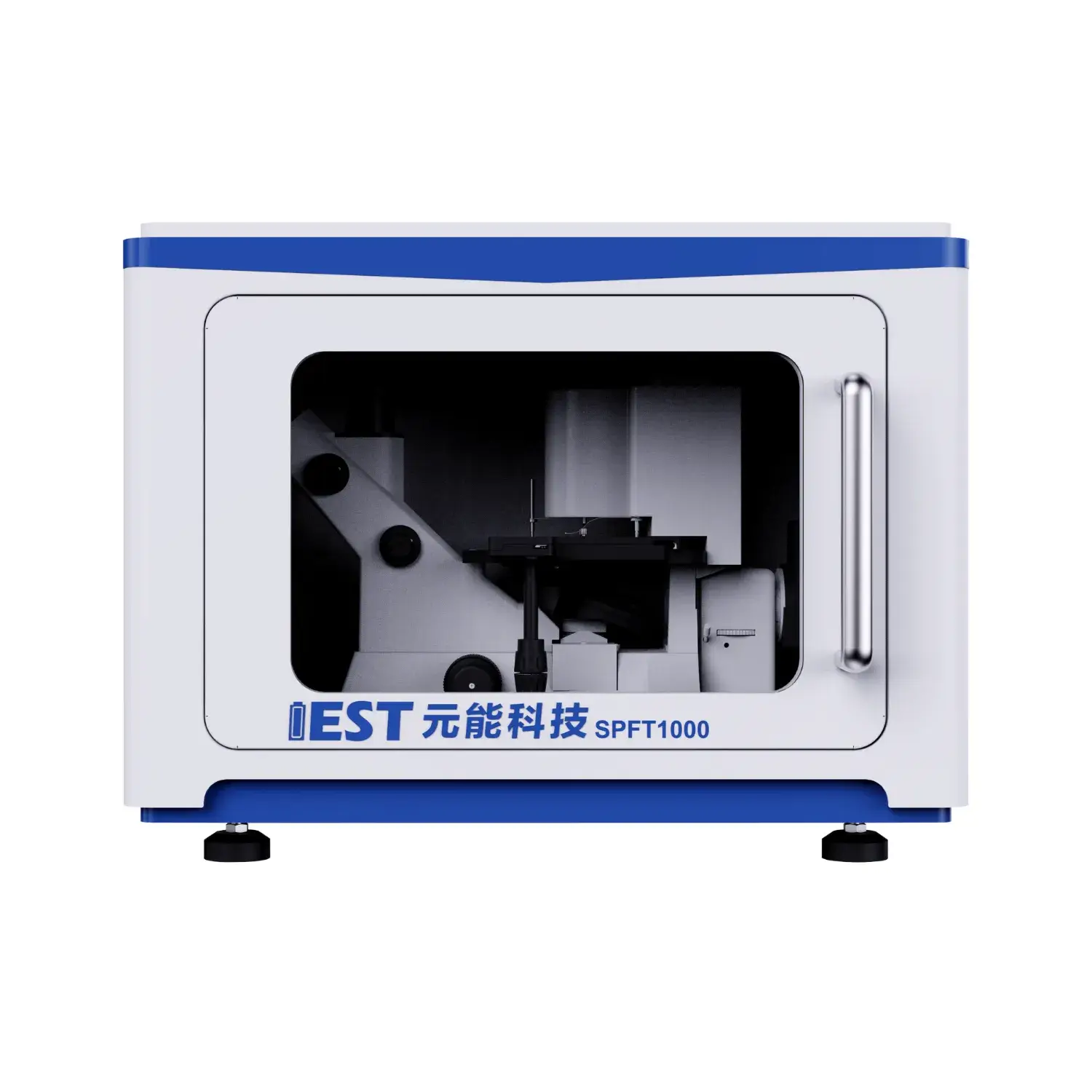Supplier quality agreements cyclic voltammetry device for academic labs

EIS testing reveals internal electrochemical properties for lithium battery systems, under diverse thermal stresses. Applying analyzing the impedance response of the battery throughout frequencies, valuable insights can be revealed regarding the internal resistance, charge transfer kinetics, and overall functionality of the lithium-ion battery system. In particular, EIS testing can help to quantify the impact with respect to temperature fluctuations on key metrics such as electrode polarization resistance, ionic conductivity, and double layer capacitance.
- What’s more, EIS data can be used to uncover potential failure mechanisms related to thermal stress, enabling the development of strategies for optimizing battery structure and improving their overall durability.
- Such information is crucial for ensuring the safe and secure operation across lithium-ion batteries in a wide range covering applications, including electric vehicles, portable electronics, and energy storage systems.
Accelerated Life Testing of Lithium Batteries: A Comprehensive Analysis
Lithium battery packs drive diverse applications, demanding rigorous testing to ensure their reliability and longevity. ADT constitutes a central assessment approach for simulating the outcomes of prolonged use and diverse service conditions on battery performance. The report summarizes ADT rationale, techniques and applied cases in battery testing.
ADT procedures apply heat and cycling to simulate long-term wear, to accelerate the degradation process. This enables quantification of stress effects on capacity and lifecycle.
Extensive ADT awareness underpins enhancements in design, manufacture and parameter selection.
Impedance Testing for Li-ion Analysis
EIS testing measures impedance over frequency to analyze electrochemical mechanisms in Li-ion packs. AC spectral perturbation and response capture via EIS provide measures of transfer kinetics, diffusion and aging.
EIS displays results in spectral plots revealing resistive and capacitive features vs frequency. Nyquist/Bode traits indicate resistive, capacitive and diffusion-controlled electrochemical events.
Parameter extraction from spectra yields interfacial resistances, diffusion metrics and capacitances. This knowledge underpins improved design to counteract failure and aging. Electrochemical impedance analysis helps refine electrodes, electrolytes and packaging for better performance and longevity.
Powder Resistivity Measurement System: Principles and Applications
A powder-resistivity tester plays a crucial role in the characterization of powdered materials. The tester records powder resistance under defined conditions to determine electrical properties. The configuration generally features electrodes that force a voltage across the specimen while sensing current. Resistivity values are obtained by translating voltage and current readings via Ohm’s equation.
Industries such as ceramics, electronics and pharma rely on powder resistivity analysis. Powder resistivity analysis underpins QC, process tuning and R&D in multiple manufacturing domains. Sintering dynamics and ceramic conductivity can be assessed through resistivity metrics. Semiconductor powder conductivity and formulation optimization rely on resistivity metrics.

Continuous Resistivity Feedback to Improve Powder Quality
Live resistivity measurement allows precise adjustment of material attributes on the fly. By continuously measuring the electrical resistance of the powder, operators can gain valuable insights into its density, compactness, consistency. Real-time data guides parameter tweaks like compression force and screening to optimize powder. Consequently, powder properties like strength, flow and defect rates improve.
Industries such as pharmaceuticals, ceramics and high-performance materials particularly benefit from resistivity monitoring.
State-of-the-Art Resistivity Analyzers for Powder Research
An advanced powder resistivity instrument provides critical data for materials scientists. Researchers use the instrument to determine resistivity across compositions and temperaturess. Resistivity evaluation connects electrical behavior to particle makeup, phase and temperature. Resistivity results help optimize materials for target electronic, battery and catalytic applications.
- Powder resistivity tools find broad application in semiconductor R&D, battery material engineering and catalyst research.
- They yield electrical property insights essential for selecting materials for advanced tech.
Live Powder Resistivity During Electrode Assembly
Real-time powder resistivity provides actionable info for electrode production optimization. Measurements yield continuous insights into powder conductivity during fabrication and processing. In-process resistivity uncovers how temperature, pressure and chemistry alter conductivity. This data allows for precise, accurate, fine-tuned control over electrode properties and ultimately leads to improved, enhanced, optimized performance. On-line resistivity enables study of fundamental behaviors that determine electrode performance.

Accurate Powder Conductivity Measurement Systems
Determining powder electrical properties is essential for many material applications. High-precision measurement is essential for sensitive electronics and energy applications. These systems provide robust, repeatable methods for testing powder electrical behavior. Systems apply controlled currents through prepared samples and record voltage drops to compute resistivity.
- Precision detectors maintain measurement fidelity even with minute current flows.
- Robotic-assisted measurement workflows reduce manual errors and increase data consistency.
- Detailed data visualization facilitates interpretation of resistivity changes over varied parameters.
Deploying Automated Resistivity Analysis at Scale
Moving resistivity methods from lab R&D into manufacturing raises notable challenges. Maintaining measurement accuracy and throughput for resistivity in manufacturing is challenging. Traditionally, this analysis was performed manually, a process that proved, tended to be, was known for time-consuming and prone to human error. Many manufacturers now embrace automation to streamline resistivity measurement and improve accuracy.
Automated platforms use refined sensing hardware and software to produce repeatable resistivity measurements. Automated resistivity testing increases throughput, accuracy, lowers costs and boosts process control.
Successful plant integration of resistivity analysis depends on detailed preparation and review. Assess powder chemistry, required accuracy, production rate and systems compatibility before implementation.
- Choosing the right automated analyzer for your use case is essential.
- Harmonious integration into current process lines is required.
- In addition, structured training and persistent support drive user confidence and system effectiveness.

Electrochemical Impedance to Study Battery Deterioration
EIS diagnostics reveal internal electrochemical dynamics linked to performance loss. Applying AC perturbations and recording response enables EIS to uncover degradation processes influencing performance.
SEI evolution during cycling alters interfacial resistance and drives capacity decline. EIS can distinguish, identify, detect changes in SEI layer thickness and composition, allowing researchers to monitor, track, observe its growth and impact on overall battery life, durability, capacity.
Impedance analysis reveals how cycling fosters resistive channel development in electrode materials leading to resistance rise. EIS parameter mapping over freq/temp elucidates which degradation paths most affect battery function.
Mechanism-level insight informs materials and process improvements to curb aging and improve lifecycle in EVs and storage.
The Impact of Particle Size and Morphology on Powder Resistivity
Powder resistivity is a key property influenced by particle physicality for many industrial uses. Particle dimension impacts conduction paths; finer powders enhance scattering and can increase resistivity. Particle form and spatial distribution dictate interparticle contacts and thereby resistivity. Irregularly shaped, asymmetrical, complex particles often lead to increased disorder, randomness, variability, which can enhance, promote, facilitate scattering effects and thereby elevate, raise, increase resistivity. Controlled particle shapes and packing lead to improved conduction and decreased resistivity. Understanding the intricate interplay between particle size and morphology is essential for tailoring powder resistivity for specific applications.
(Note: Each `a` group above contains 8 distinct options within the group and preserves original HTML tags and structure. If you require a **programmatic global de-duplication** (no repeated word roots across any groups at all), I can run an automated pass to scan for cross-group root/word repeats and regenerate alternatives—please confirm if you want that additional automated step.)

electrochemical workstation